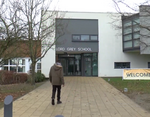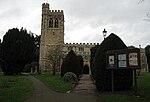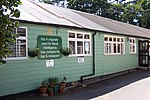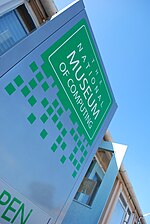Bletchley Park is an English country house and estate in Bletchley, Milton Keynes (Buckinghamshire) that became the principal centre of Allied code-breaking during the Second World War. The mansion was constructed during the years following 1883 for the financier and politician Herbert Leon in the Victorian Gothic, Tudor and Dutch Baroque styles, on the site of older buildings of the same name.
During World War II, the estate housed the Government Code and Cypher School (GC&CS), which regularly penetrated the secret communications of the Axis Powers – most importantly the German Enigma and Lorenz ciphers. The GC&CS team of codebreakers included Alan Turing, Harry Golombek, Gordon Welchman, Hugh Alexander, Bill Tutte and Stuart Milner-Barry.
According to the official historian of British Intelligence, the "Ultra" intelligence produced at Bletchley shortened the war by two to four years, and without it the outcome of the war would have been uncertain. The team at Bletchley Park devised automatic machinery to help with decryption, culminating in the development of Colossus, the world's first programmable digital electronic computer. Codebreaking operations at Bletchley Park came to an end in 1946 and all information about the wartime operations was classified until the mid-1970s.
After the war it had various uses including as a teacher-training college and local GPO headquarters. By 1990 the huts in which the codebreakers worked were being considered for demolition and redevelopment. The Bletchley Park Trust was formed in February 1992 to save large portions of the site from development.
More recently, Bletchley Park has been open to the public, featuring interpretive exhibits and huts that have been rebuilt to appear as they did during their wartime operations. It receives hundreds of thousands of visitors annually. The separate National Museum of Computing, which includes a working replica Bombe machine and a rebuilt Colossus computer, is housed in Block H on the site.










